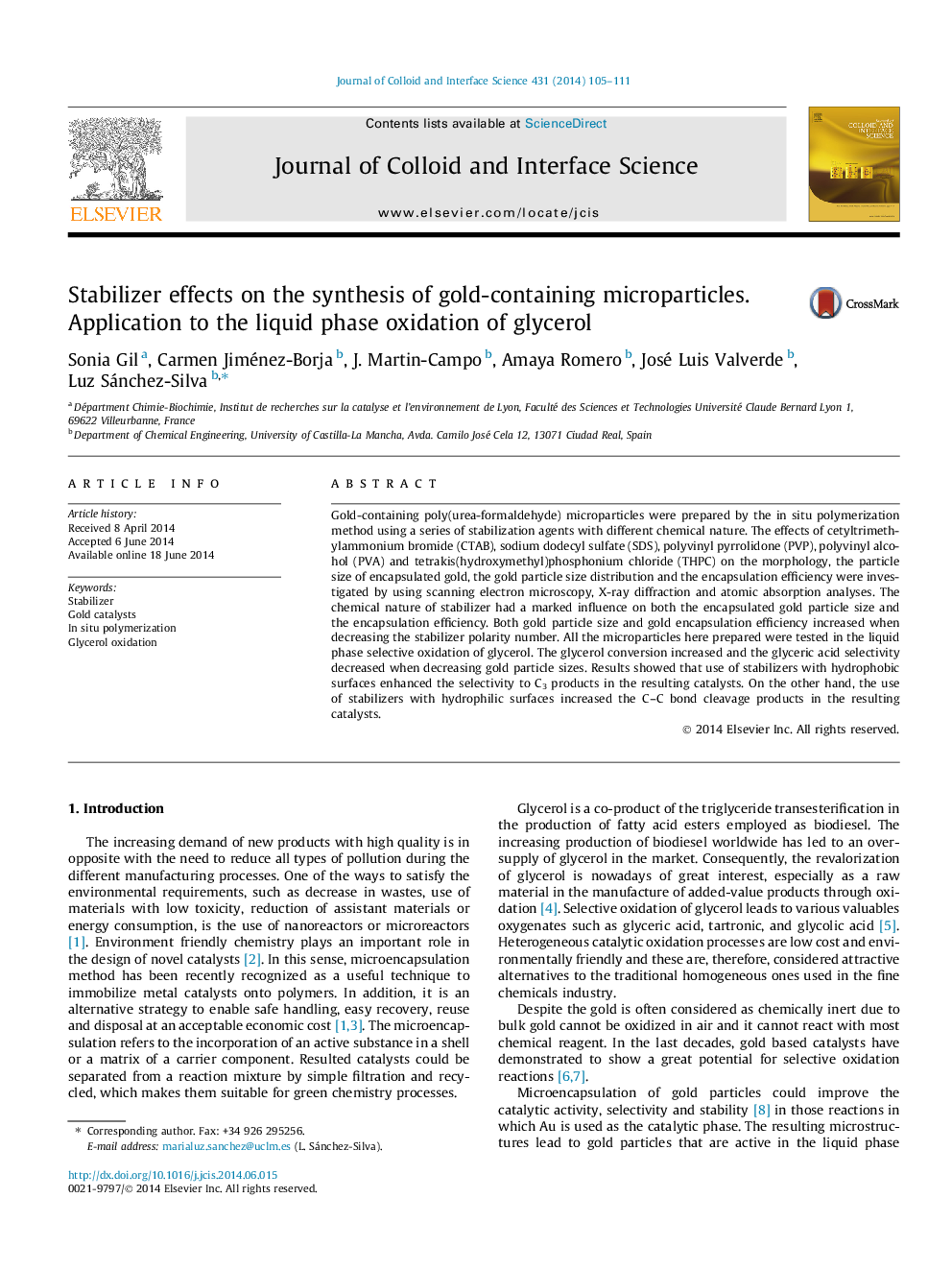| Article ID | Journal | Published Year | Pages | File Type |
|---|---|---|---|---|
| 607079 | Journal of Colloid and Interface Science | 2014 | 7 Pages |
•Gold-containing microparticles were prepared by in situ polymerization.•The effect of different stabilizers on the synthesis of microparticles was studied.•The smallest encapsulated gold particles were obtained for SDS and CTAB.•Microparticles were tested as catalysts in the oxidation of glycerol reaction.•Glycerol conversion and glyceric acid selectivity were affected by gold size.
Gold-containing poly(urea-formaldehyde) microparticles were prepared by the in situ polymerization method using a series of stabilization agents with different chemical nature. The effects of cetyltrimethylammonium bromide (CTAB), sodium dodecyl sulfate (SDS), polyvinyl pyrrolidone (PVP), polyvinyl alcohol (PVA) and tetrakis(hydroxymethyl)phosphonium chloride (THPC) on the morphology, the particle size of encapsulated gold, the gold particle size distribution and the encapsulation efficiency were investigated by using scanning electron microscopy, X-ray diffraction and atomic absorption analyses. The chemical nature of stabilizer had a marked influence on both the encapsulated gold particle size and the encapsulation efficiency. Both gold particle size and gold encapsulation efficiency increased when decreasing the stabilizer polarity number. All the microparticles here prepared were tested in the liquid phase selective oxidation of glycerol. The glycerol conversion increased and the glyceric acid selectivity decreased when decreasing gold particle sizes. Results showed that use of stabilizers with hydrophobic surfaces enhanced the selectivity to C3 products in the resulting catalysts. On the other hand, the use of stabilizers with hydrophilic surfaces increased the C–C bond cleavage products in the resulting catalysts.
Graphical abstractFigure optionsDownload full-size imageDownload high-quality image (42 K)Download as PowerPoint slide
